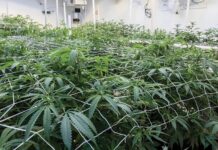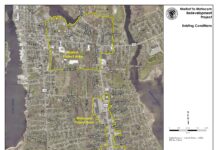
SOUTH KINGSTOWN — Scientists and students from the University of Rhode Island and Roger Williams University are documenting seaweed species statewide to track changes in biodiversity, an interest spurred by the rising numbers of invasive seaweed species found on the Rhode Island coast every year.
Invasive species can potentially impact tourism and the local economy negatively through their behavior in the Rhode Island marine environment, according to a URI release.
One such species is the Heterosiphonia japonica, known as “an aggressive, red feather-like seaweed native to Japan that was reported in Rhode Island in 2010 and is smothering and replacing native seaweeds throughout the coast,” said the release.
As the Heterosiphonia japonica does not have natural herbivores to feed on it, the non-native seaweed species is “running rampant” and can potentially clog aquaculture facilities, Christopher Lane, URI assistant professor of biological sciences, said in a statement.
“We’re essentially using seaweed as a sentinel to monitor the health of the coast…By keeping tabs on what’s going on in the seaweed community, you can get a good idea of what’s happening throughout the marine environment,” said Lane.
The seaweed census not only keeps track of invasive species; it also seeks to identify changes in biodiversity that are the result of global warming, and will most likely identify previously undiscovered species of seaweed, said Lane.
A similar census in Bermuda that Lane conducted over the last 10 years found 70 new species, he reported.
The Rhode Island-based seaweed census began in the spring and will continue through the year. Lane and his students survey the West Bay and south coast region, while Brian Wysor, associate professor of marine biology at RWU, leads coverage of the East Bay.
The teams “walk beaches at low tide to collect samples and don scuba gear at high tide to search the intertidal zone and areas just off shore,” said the URI release. The samples collected by university scientists and students will be permanently archived.
A grant from the Rhode Island Science and Technology Advisory Council funds the seaweed census project, which also entails creating an online, seaweed DNA database.
The database, which contains a sample from each species, will be made accessible to the public.
A similar project for the entire New England region will utilize data gathered by the Rhode Island-based project.












